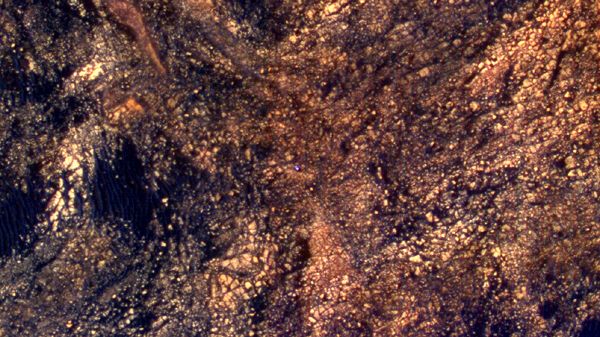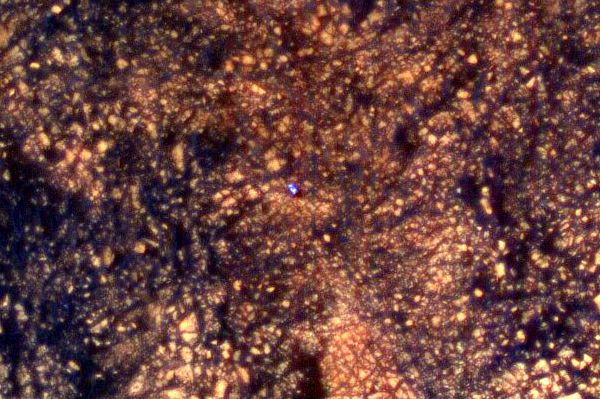
NASA / JPL - Caltech / Univ. of Arizona
NASA Mars Orbiter Views Rover Climbing Mount Sharp (News Release - June 20)
Using the most powerful telescope ever sent to Mars, NASA's Mars Reconnaissance Orbiter caught a view of the Curiosity rover this month amid rocky mountainside terrain.
The car-size rover, climbing up lower Mount Sharp toward its next destination, appears as a blue dab against a background of tan rocks and dark sand in the enhanced-color image from the orbiter's High Resolution Imaging Science Experiment (HiRISE) camera. The exaggerated color, showing differences in Mars surface materials, makes Curiosity appear bluer than it really looks.
The image was taken on June 5, 2017, two months before the fifth anniversary of Curiosity's landing near Mount Sharp on Aug. 5 PDT (Aug. 6, 2017, EDT and Universal Time).
When the image was taken, Curiosity was partway between its investigation of active sand dunes lower on Mount Sharp, and "Vera Rubin Ridge," a destination uphill where the rover team intends to examine outcrops where hematite has been identified from Mars orbit.
The rover's location that day is shown at https://mars.nasa.gov/multimedia/images/2017/curiositys-traverse-map-through-sol-1717 as the point labeled 1717. Images taken that day by Curiosity's Mast Camera (Mastcam) are at https://mars.nasa.gov/msl/multimedia/raw/?s=1717&camera=MAST%5F.
HiRISE obtains images of Curiosity a few times each year. The University of Arizona, Tucson, operates HiRISE, which was built by Ball Aerospace & Technologies Corp., Boulder, Colorado. NASA's Jet Propulsion Laboratory, a division of Caltech in Pasadena, California, manages the Mars Reconnaissance Orbiter Project and Mars Science Laboratory Project for NASA's Science Mission Directorate, Washington.
Source: Jet Propulsion Laboratory
****

NASA / JPL - Caltech / Univ. of Arizona

No comments:
Post a Comment